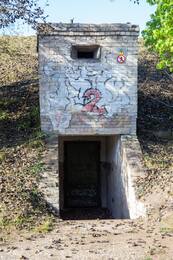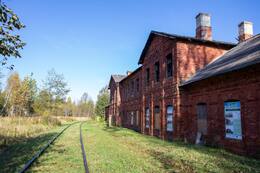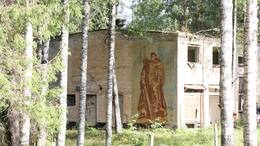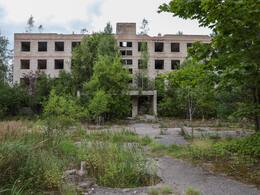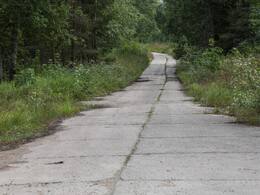Strateginės / balistinės raketos
Strateginės / balistinės raketos. Balistinė raketa yra raketa su balistine, suborbitine skrydžio trajektorija, skirta kovinei galvutei nugabenti į konkretų taikinį. Raketos kryptį ir greitį lemia raketos orientacija paleidimo aikštelėje ir variklio veikimas. Išjungus variklį, raketa tęsia skrydį pagal orbitinės mechanikos ir balistikos dėsnius. Pirmoji balistinė raketa A-4, geriau žinoma kaip V-2, buvo pagaminta nacistinėje Vokietijoje 1930–1940 m., ją suprojektavo Wernheris von Braunas.
Tarpžemyninė balistinė raketa (ICBM) yra tolimojo nuotolio (daugiau nei 5500 km) balistinė raketa. Paprastai jos naudojamos kaip strateginiai ginklai ir yra skirtos branduoliniams ginklams gabenti dideliais atstumais arba į kitus žemynus. Pirmąją ICBM, R-7, SSRS paleido 1957 m. spalio 4 d. R-7 buvo pirmoji pasaulyje tarpžemyninė balistinė raketa (ICBM), kurią SSRS sukūrė šeštajame dešimtmetyje. Šiek tiek modifikuota forma ji buvo panaudota paleisti pirmąjį dirbtinį Žemės palydovą. R-7 buvo galingesnių kosminių raketų, tokių kaip „Vostok“, „Molnija“ ir „Sojuz“, pagrindas.
Šiuo metu SKBR naudoja šios šalys: Jungtinės Valstijos, Rusija, Jungtinė Karalystė, Prancūzija ir Kinija. SKBR šiuo metu kuria Indija, Izraelis, Pakistanas ir Šiaurės Korėja.
Daugiau informacijos šaltinių
Strateginės / balistinės raketos. Vikipedija. https://lv.wikipedia.org/wiki/Ballistisk%C4%81_ra%C4%B7ete
Tarpžemyninė balistinė raketa. Vikipedija. https://lv.wikipedia.org/wiki/Starpkontinent%C4%81l%C4%81_ballistisk%C4%81_ra%C4%B7ete
R-7 (raketa). Vikipedija. https://lv.wikipedia.org/wiki/R-7_(ra%C4%B7ete)
Susijusi laiko juosta
Susijusios vietos
Požeminiai bunkeriai Valkoje
Valkos bunkeriai yra Valkos miesto centre, kairėje Ausekļa gatvės pusėje, šalia Adamo Tēraudo mokyklos. Lankytojai bunkerius gali apžiūrėti tik iš išorės. Sovietų armijos bunkeriai Valkoje buvo vienos slapčiausių vietų Sovietų Latvijoje, prieinamos tik asmenims su specialiais leidimais. Nuo 1953 iki 1989 m. juose buvo įsikūręs Sovietų armijos strateginių raketų ryšių rezervas. Dideliais šešiolikračiais sunkvežimiais buvo pristatomi masyvūs gelžbetonio blokai bunkerių statybai. Baigus statyti, visi trys bunkeriai buvo uždengti žvyru, kad būtų galima papildomai sutvirtinti ir izoliuoti. Bunkeriuose buvo įsikūręs strateginių raketų ryšių rezervas, pavaldus Leningrado ryšių centrui. Iš šių bunkerių buvo valdomi silosai su armijos raketomis. Valkos ir Valgos apylinkėse buvo 20 tokių silosų. 1962 m. spalį, per Kubos raketų krizę, šios raketos buvo paruoštos kovai ir nukreiptos į Floridą. Pasak legendos, likus porai valandų iki paleidimo, jos buvo paleistos. Šalia Adamo Tēraudo mokyklos ir požeminių bunkerių yra Švedų (Šeremetjevo) įtvirtinimas. Dirbtinė žemių siena buvo pastatyta Šiaurės karo pradžioje, apie 1702 m., siekiant apsaugoti Valką nuo švedų. Stačiausia įtvirtinimo siena yra nukreipta į Ērgemės kaimą, o kita pusė – į Auseklės gatvę.
Valkos traukinių stotis
Valkos geležinkelio stotis yra Porukos gatvės gale, šalia nenaudojamų geležinkelio bėgių. Stoties pastatą galima apžiūrėti tik iš išorės, kur yra informaciniai stendai apie geležinkelio svarbą Valkoje ir Valgoje. Šalia stoties pastato yra atminimo akmuo, skirtas 1941 m. birželio 14 d. į Sibirą ištremtiems žmonėms. Stoties pastatas buvo pastatytas apie 1896–1897 m. Iš pradžių čia buvo nutiestos siaurojo geležinkelio linijos Valkos-Rūjienos-Pernu ruože. Pirmojo pasaulinio karo metu geležinkelis buvo smarkiai apgadintas. Nustačius valstybės sieną, Valkos geležinkelio stotis (Valka II) tapo pasienio stotimi. 1920 m. rugsėjo pabaigoje į Valką atvyko speciali Geležinkelių valdybos komisija. Komisija buvo įgaliota derėtis ir sudaryti sutartį su Estija dėl keleivių perkėlimo iš vienos valstybės stoties į kitą. Trikampiu išdėstytų Lugažių, Valkos ir Valgos stočių bėgiai buvo strategiškai svarbūs, nes leido šarvuotiems traukiniams apsisukti ir judėti priešinga kryptimi. Sovietmečiu SSRS armija naudojo šią stotį balistinėms raketoms Valkai pristatyti. 1941 m. birželio 13–14 d. naktį įvyko masinis Latvijos gyventojų deportavimas į SSRS gilumą. Daugiau nei 90 žmonių iš Valkos ir aplinkinių vietovių buvo susodinti į gyvulių vagonus ir deportuoti iš Valkos geležinkelio stoties be jokio teismo sprendimo, išankstinio įspėjimo ar paaiškinimų. 1944 m. rugsėjį stotį sunaikino besitraukianti vokiečių armija.
Sovietų armijos raketų bazė Zeltiniuose
Buvusi sovietų armijos raketų bazė yra Medņukalnuose, Zeltinių valsčiuje, Alūksnės savivaldybėje. Ši branduolinių raketų bazė buvo ypač slaptas sovietų armijos karinis objektas, veikė Zeltiniuose, Alūksnės savivaldybėje, nuo 1961 iki 1989 m. Objekte buvo dislokuotos vidutinio nuotolio balistinės raketos P-12 (8K63) ir P12Y (8K63Y) su 4 paleidimo aikštelėmis. Jų skrydžio atstumas buvo 2200 kilometrų. Šiuo laikotarpiu armija spygliuota viela saugojo apie 300 ha plotą, esantį mažiau nei kilometro atstumu nuo nacionalinio regioninio greitkelio Sinole-Silakrogs P34. Gyvosios ir itin slaptos zonos išliko iki šių dienų. Betoniniai keliai veda į tuo metu nuo akių paslėptas vietas: angarus, paleidimo aikšteles ir slėptuves nuo bombų. Dešimčių hektarų plote išsidėstę įvairūs branduolinių raketų priežiūros ir aptarnavimo statiniai. Įrenginiai, tiekę autonominį elektros energijos, vandens ir šilumos tiekimą teritorijai, buvo sunaikinti pasitraukus kariuomenei. Kariuomenei pasitraukus, dalis įrangos buvo perduota vietos savivaldybei. Šiuo metu lankytojai gali apžiūrėti 20 ha buvusios raketinės bazės teritorijos, kurios pietvakarinė dalis yra turistų traukos objektas. Bazę aplankę turistai gali rinktis iš pagrindinės ekspozicijos apie raketinės bazės istoriją, esančios Zeltinių muziejuje, arba turistinio maršruto bazės teritorijoje. Draugų grupės iki 12 žmonių čia gali žaisti lazerinį žaidimą.
Buvęs SSRS Marcieno armijos miestas arba „Gorodokas“
Įsikūręs Mārciene, Mārcieno valsčiuje, Madonos rajone.
1957 m. pradėta statyti raketinė bazė Mārcienoje, taip pat betoninio privažiavimo kelio ir geležinkelio tiesimas į Gaiziņkalnį, kur buvo planuojama įrengti raketų paleidimo aikštelę (kai JAV ir Didžioji Britanija atrado šį planą, statybos Gaiziņkalnyje buvo sustabdytos). Kariniame miestelyje buvo pastatyta keletas daugiabučių namų kariškiams iš kitų SSRS respublikų.
Šiuo metu buvusios kariuomenės bazės teritorija yra iš dalies apleista ir apaugusi krūmais, dalis jos priklauso įmonėms ar privatiems asmenims ir nebėra prieinama visuomenei. Kariuomenės bazė daugiausia yra mūrinių pastatų lūšnynas. Mārcienos kaime – daugiabučiai (kai kurie vis dar gyvenami), kariuomenės karininkų bendrabutis (buvęs Mārcienos pradinės mokyklos pastatas), karininkų namas (Mārcienos kultūros namai) ir kariuomenės parduotuvės pastatas.




